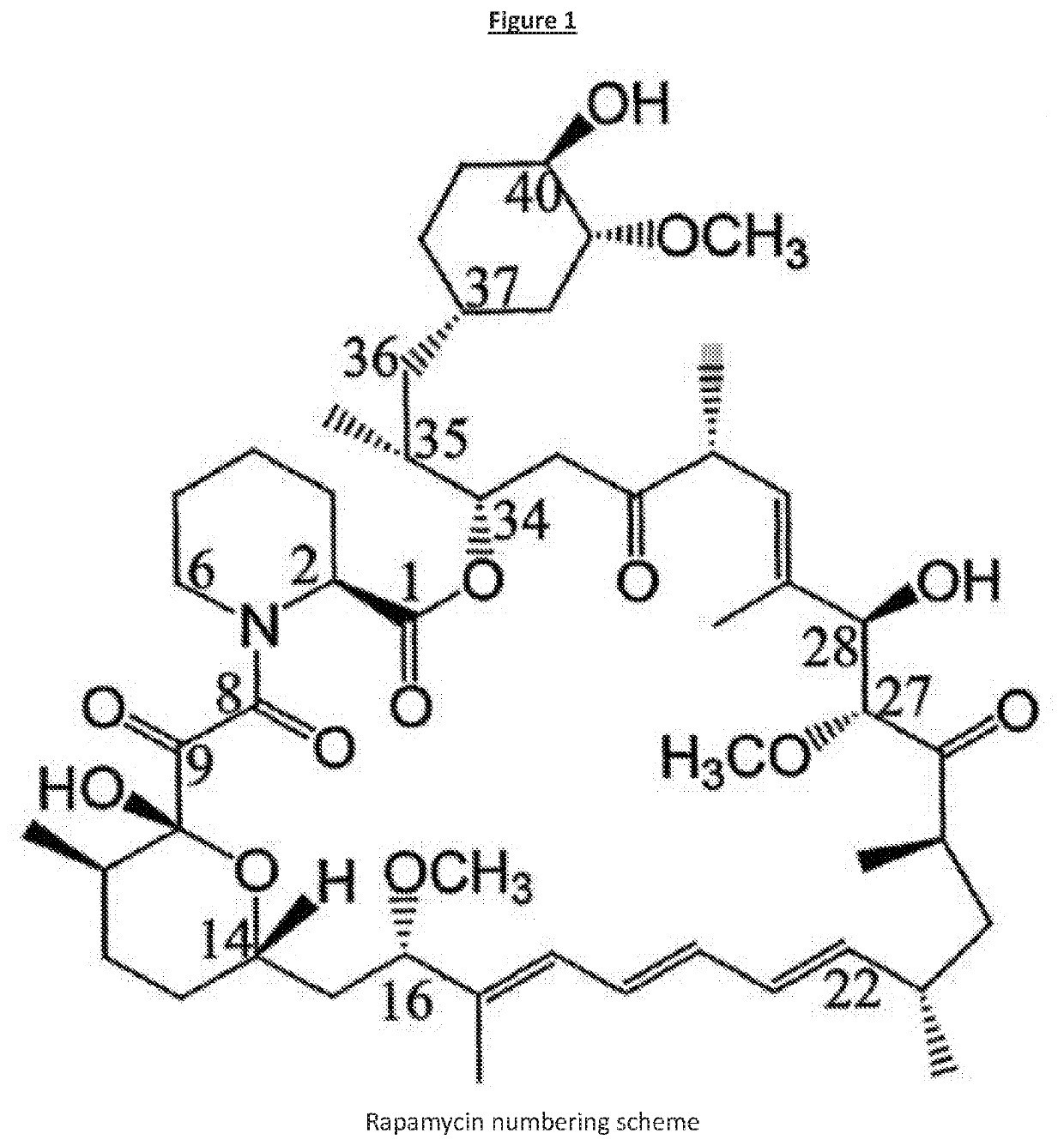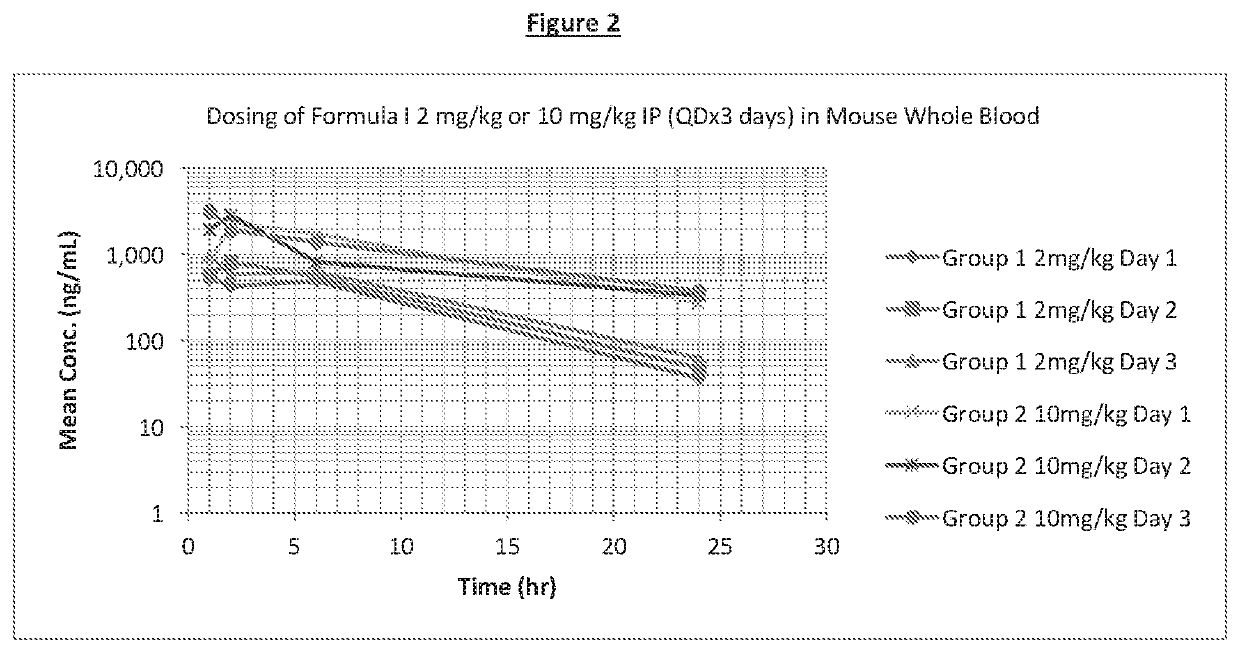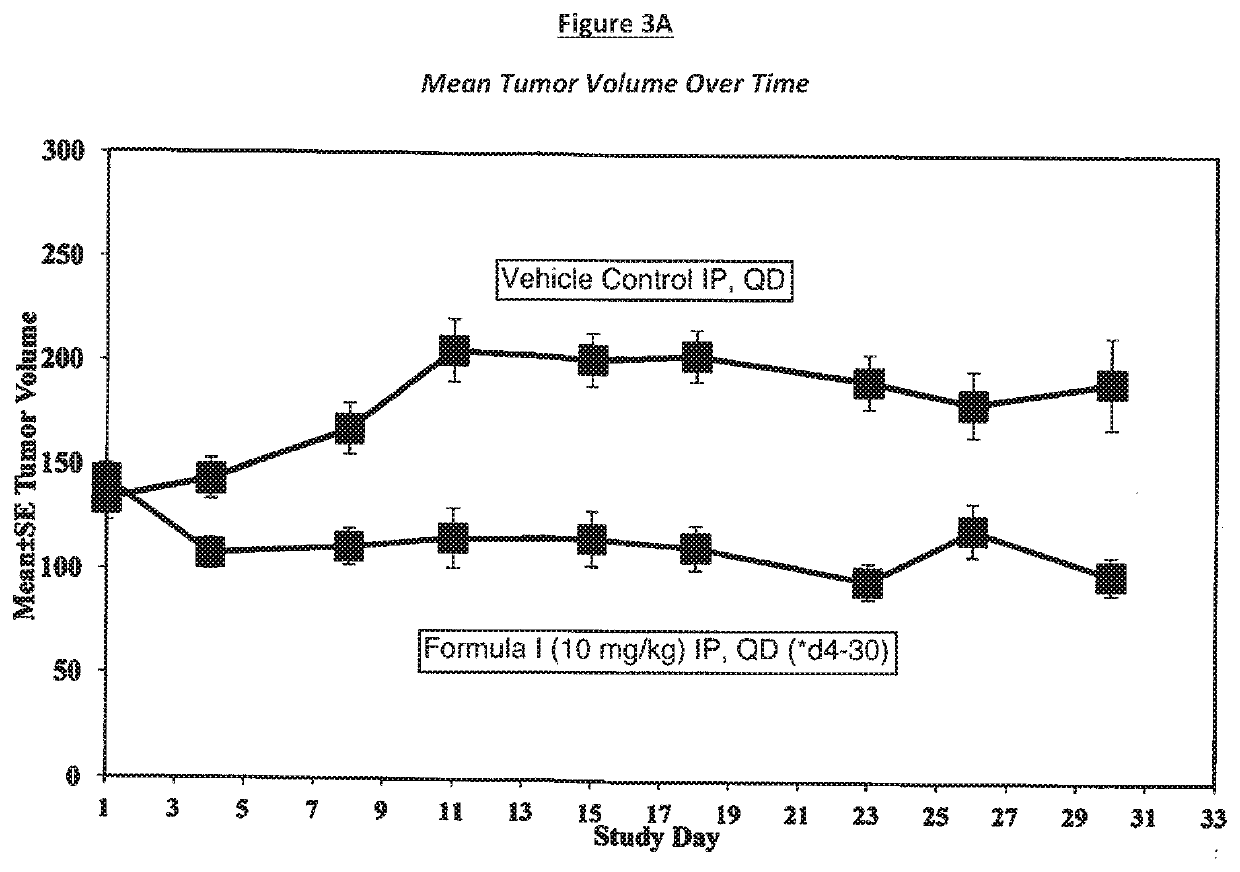Rapamycin analog for prevention and/or treatment of cancer
a cancer and analog technology, applied in the field of rapamycin analog for cancer prevention and/or treatment, can solve the problems of reduced effectiveness of administered drug compounds, high cost, and high cost of rapamycin, and achieve the effect of preventing and/or treating cancer
- Summary
- Abstract
- Description
- Claims
- Application Information
AI Technical Summary
Benefits of technology
Problems solved by technology
Method used
Image
Examples
example 1
[0048]This example compares the inhibition of proliferation the indicated cell lines, compared with that observed for staurosporin and rapamycin, using the OncoPanel™ cell proliferation assay which measures the proliferation response of cancer cell lines to drug treatments through high-content fluorescence imaging or bioluminescence.
[0049]Cells were grown in RPMI 1640, 10% FBS, 2 mM L-alanyl-L-glutamine, 1 mM Na pyruvate, or a special medium. Cells were seeded into 384-well plates and incubated in a humidified atmosphere of 5% CO2 at 37° C. Compounds were added the day following cell seeding. At the same time, a time zero untreated cell plate was generated. After a 3-day incubation period, cells were fixed and stained to allow fluorescence imaging of nuclei. Compounds (1 mM stock solutions) were serially diluted in half-log steps from the highest test concentration (1 micromol), and assayed over 10 concentrations with a maximum assay concentration of 0.1% DMSO. Automated fluorescenc...
example 2
[0057]This example illustrates one method for determining the pharmacokinetics and bioavailability of the compound of Formula I.
[0058]A person of skill in the art will be able to determine the pharmacokinetics and bioavailability of the compound of Formula I using in vivo and in vitro methods known to a person of skill in the art, including but not limited to those described below and in Gallant-Haidner et al, 2000 and Trepanier et al, 1998 and references therein. The bioavailability of a compound is determined by a number of factors, (e.g. water solubility, cell membrane permeability, the extent of protein binding and metabolism and stability) each of which may be determined by in vitro tests as described in the examples herein, it will be appreciated by a person of skill in the art that an improvement in one or more of these factors will lead to an improvement in the bioavailability of a compound. Alternatively, the bioavailability of the compound of Formula I may be measured usin...
example 3
Xenograft Studies
[0063]A study was conducted to determine the anti-tumor efficacy of the compound of Formula I on U-118 MG (ATCC® HTB-15, human brain glioblastoma) solid tumors in female nude mice. In this study, advanced-stage subcutaneous xenografts were established to evaluate the antitumor activity of test agents so that clinically relevant parameters of activity could be determined. The end point used to assess drug efficacy was relative tumor growth (comparing tumors in treated versus control mice). In these models, tumor growth were monitored and test agent treatment is typically initiated once tumors reach a weight range of 100-300 mg. Tumor size and body weights were obtained two times per week for determination of toxicity and efficacy. The U-118 MG (ATCC® HTB-15) cell line used in this study was isolated from a malignant glioblastoma taken from a 50-year-old male Caucasian. Study endpoints were determined using the parameters: percent tumor growth inhibition (% TGI)=100 (...
PUM
| Property | Measurement | Unit |
|---|---|---|
| Volume | aaaaa | aaaaa |
| Volume | aaaaa | aaaaa |
| Volume | aaaaa | aaaaa |
Abstract
Description
Claims
Application Information
 Login to View More
Login to View More - R&D Engineer
- R&D Manager
- IP Professional
- Industry Leading Data Capabilities
- Powerful AI technology
- Patent DNA Extraction
Browse by: Latest US Patents, China's latest patents, Technical Efficacy Thesaurus, Application Domain, Technology Topic, Popular Technical Reports.
© 2024 PatSnap. All rights reserved.Legal|Privacy policy|Modern Slavery Act Transparency Statement|Sitemap|About US| Contact US: help@patsnap.com










